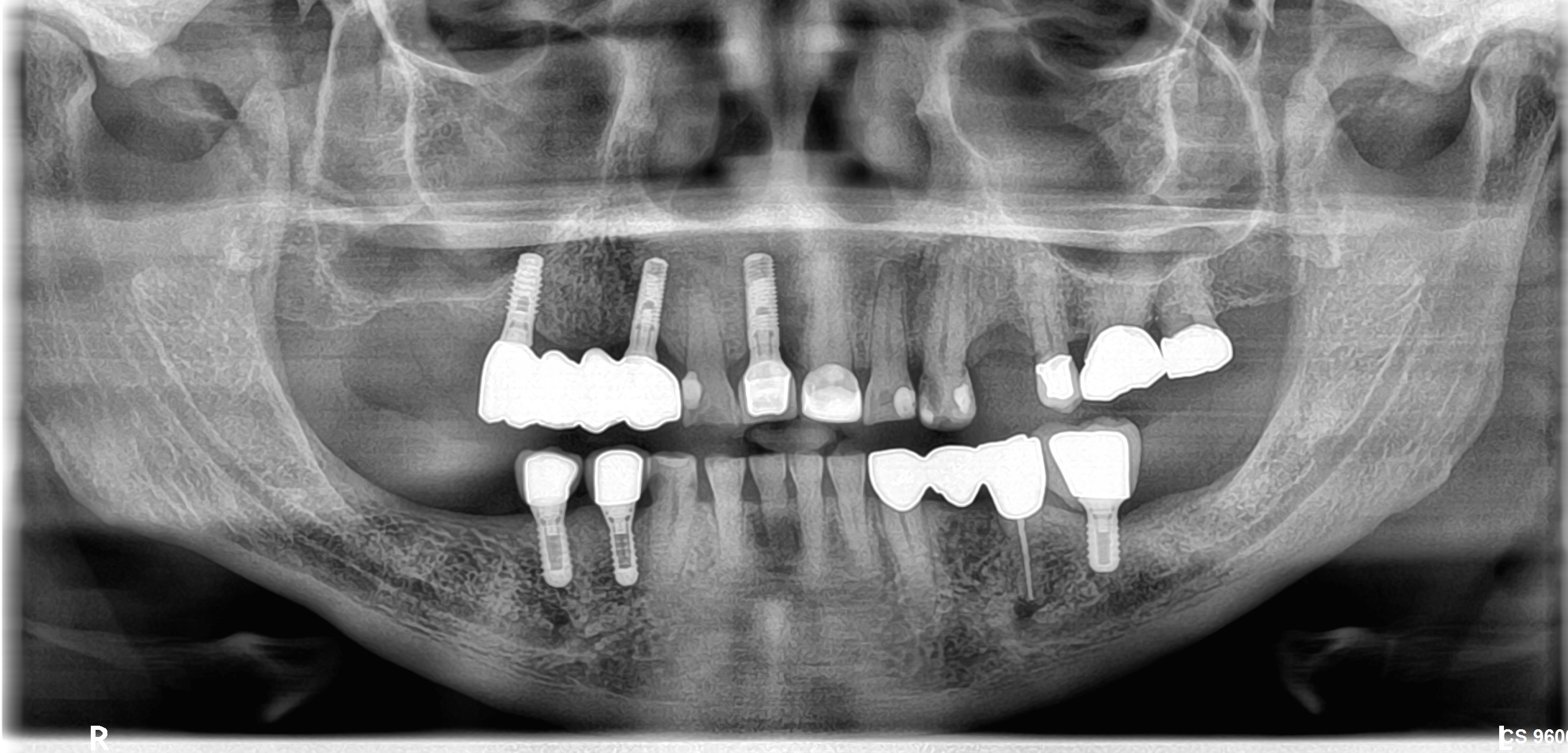Managing aesthetic implant case: advice?
I am having little trouble with one of my cases, and I would be grateful for some advice.
Tooth #10 [maxillary left lateral incisor; 22] was extracted last December. I performed socket preservation using bio-oss collagen and x2 collagen plug. During the exo appointment, I attempted to remove the tooth atraumatically using only periotomes. However, the tooth was ankylosed and it was very difficult to remove. At 4 months post exo, I installed a 3.3 NP x 10mm Straumann BL implant on the 22 site. There was a small defect distally exposing 2 threads, so Bio-oss/bio guide was placed on the distal defect as well as on the buccal site to improve the contour.
4 months post treatment, an x-ray was taken and I noticed some defects where Bio-oss was placed.
I have a couple of questions:
Q1) What would you expect to see on the distal during uncovering, and what would you do rectify? If you see the defect, would you graft again and attempt to do a primary closure again?
Q2) About the soft tissue deficiency, would you consider a connective tissue graft (CTG) during the second stage to improve the volume, eg Buccal contour?
Q3) Any other suggestions to improve the aesthetics?
Thanks in advance for your comments!!
![]a](https://osseonews.nyc3.cdn.digitaloceanspaces.com/wp-content/uploads/2015/06/x-ray-b4-exo-e1435502615500.jpg)a
![]y](https://osseonews.nyc3.cdn.digitaloceanspaces.com/wp-content/uploads/2015/06/b4-x-ray.jpg)y
![]x-ray-immediately-after](https://osseonews.nyc3.cdn.digitaloceanspaces.com/wp-content/uploads/2015/06/x-ray-immediately-after.jpg)
![]sa-4_2](https://osseonews.nyc3.cdn.digitaloceanspaces.com/wp-content/uploads/2015/06/sa-4_2.jpg)
![]Frontal View After](https://osseonews.nyc3.cdn.digitaloceanspaces.com/wp-content/uploads/2015/06/frontal-view-after.jpg)Frontal View After
















